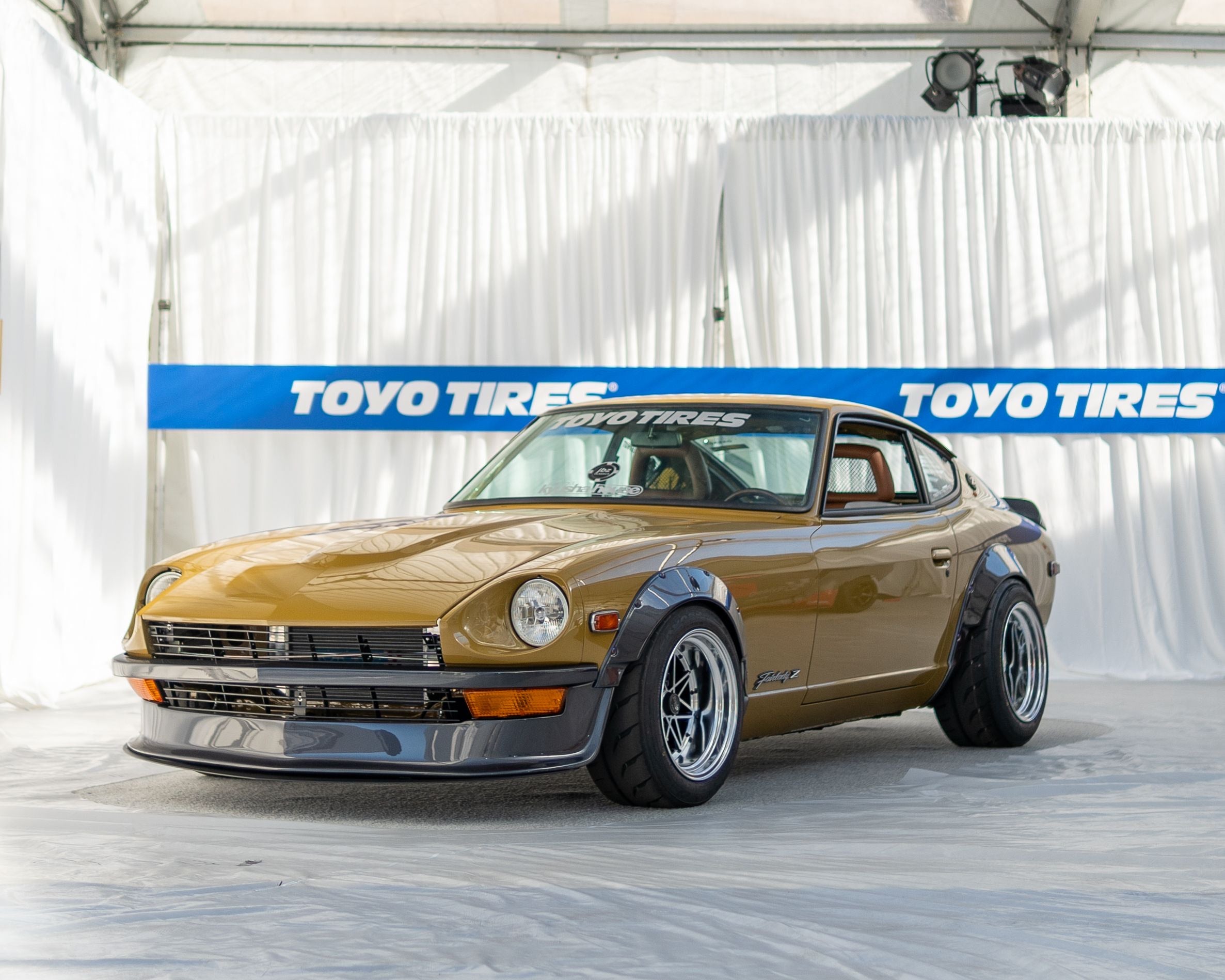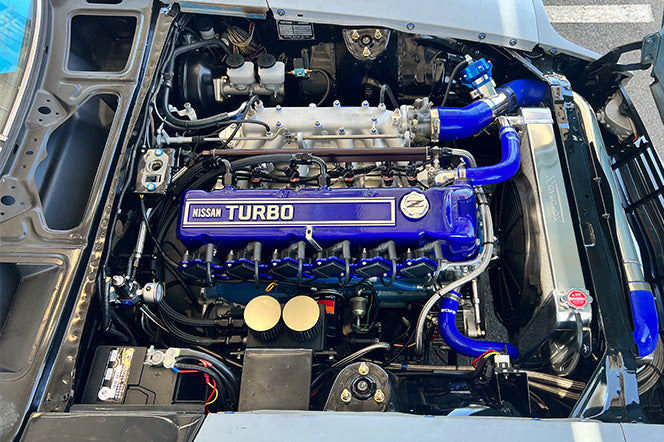If you own an S30Z and you switch from mechanical to electric fans, you'll see improvements in performance and reliability right away. The stock mechanical fan that came with your car loses efficiency at idle (when you need airflow the most), and it robs horsepower at high RPMs when you want maximum power. Electric fans solve these problems because they keep steady cooling at any engine speed while freeing up those parasitic losses.
This conversion has become almost standard in the restoration community, and there are hundreds of documented successes on ClassicZCar and HybridZ forums. The results are excellent. Modern electric fans deliver up to 25% better temperature control compared to those 1970s mechanical designs, and they also give you measurable horsepower gains. You'll find everything from premium bolt-on kits to budget junkyard options, so you can pick what works for your S30Z and the conditions you drive in.
The capacity of your electrical system matters more than most people think. You really need to match your fan choice with your engine configuration and what your electrical system can support.
Table of Contents
How Electric Fans Help Your Engine
Most people have no idea how much power their mechanical fan is actually taking away from their Z. Once you take off that belt-driven fan, you're going to free up somewhere between 3 to 5 horsepower at the wheels. That might not sound like a whole lot, but you'll feel the difference in the higher gears where you need every bit of power you can get.
Where you'll see the benefit most is when you're stuck in traffic or at a track day. Mechanical fans spin along with the engine, which means they're moving the least amount of air right when you need cooling the most. Say you're sitting idle in Los Angeles traffic on a hot summer day. Your engine is running at maybe 700 RPM, so the mechanical fan is barely moving any air at all. An electric fan runs at full speed, no matter what your engine is doing.
Track guys love electric fans for a completely different reason. When you're doing high-speed runs, you can actually shut the fan off completely since air is already flowing through the radiator just from your speed. This gets rid of any drag on the engine when you need maximum power. The physics here are pretty simple - but it's something plenty of people never think about. You won't have to sit there and watch your temperature gauge slowly creep up toward the red zone anymore. Your engine will stay at safe temperatures even when it gets hot out there.

There's another benefit that gets overlooked. Electric fans cut down on heat in the engine bay because they only run when you need them to. Less heat in there means your carburetor is going to run better, and your ignition timing will stay more steady. Your vintage L-series engine is going to last longer between rebuilds, too. This makes a bigger difference than most people think, especially during the summer months.
That 25% temperature drop everyone mentions proves itself when those hot August track days come around. Instead of having to watch your temperature gauge climb up past where you're comfortable with it, you'll see nice, steady readings even during long sessions at the track.
When your cooling stays steady like this, it changes how you drive. You go from worrying about temperatures to just enjoying the drive. Long track sessions that used to be risky now just become part of your normal day. Your engine runs right in that sweet zone where the power comes on smoothly and stays predictable the whole time.
Pick the Right Fan for Your Setup
Your engine setup is going to control what CFM you need for your fan. A stock L24 will do fine with around 1500 CFM. But if you're running a stroked L28 turbo that generates plenty of heat, you should go with something closer to 2000 CFM or even more than that.
Most people choose the Ford Taurus fan because they're available at just about any junkyard, and Ford tested these fans well before putting them in production vehicles. You can grab the part number and know just what you're buying. These fans are so reliable that they're worth looking for at your local yard. Ford built these to handle tough conditions in heavy vehicles. Your Z will never put as much stress on them as a completely loaded Taurus did.

Once you seal up the area between the fan and radiator properly, you can improve your cooling efficiency by around 40 percent. That's what separates okay cooling from the kind of cooling that gives you real confidence on hot days. If you have poor sealing, it makes your fan work harder while it pulls air from the wrong places instead of through the radiator where you actually need it. Your coolant temperatures will start to climb when you have gaps around the edges. Stop-and-go traffic really puts your cooling system to the test when this happens.
Full kits give you the convenience of plug-and-play installation with harnesses that are already wired up and ready to go. Some kits will even turn on the fans when your A/C comes on. The downside is that you lose some flexibility since you have to use their particular setup. Custom setups let you pick out each component you want. But you'll need to spend more time on the wiring and fabrication work.
Modern controllers give you a lot more features than basic thermostats do. PWM controllers can change the fan speed based on temperature, which helps your electrical system and keeps everything quieter when you don't need the fan running full speed. This variable speed control helps your motor last longer while drawing less power at lower speeds. Your alternator won't have to work as hard during normal driving conditions, either.
Power and Wiring for Your Fans
Your stock 60-amp alternator might struggle when you add dual 15-amp fans. When you add headlights and other accessories, the alternator has to work even harder. The electrical load piles up fast. The output curve on these older units tends to drop off quite a bit at idle, and that's right when you need the fans working their hardest.
You can't just use any wire and expect it to work right. The amperage draw and length of your wire run determine what gauge you need. If the wire is too thin, you'll get voltage drop, which hurts fan performance. The wire gauge controls how much power gets to your fans. If you cut corners here, your expensive fans will run slower and move less air when temperatures start to climb. Your cooling system ends up being the weak link in your entire build.
Clearance can become a real headache when you're working with different radiator setups. Aluminum radiators usually have different mounting points than the original brass units. You might need to make some modifications that you didn't plan for. Luckily, most modern kits come with custom aluminum shrouds that bolt right onto stock replacement radiators. So you won't have to do any major fabrication work.

People miss the ground connection all the time. But getting this right matters. I've seen plenty of people skip it completely. Poor grounds cause fans to fail much earlier than they should. You want to make a solid connection right to the chassis or engine block. You shouldn't rely on the radiator mounting points as your ground path.
Where you put your relays also changes voltage drop. Mount them close to the radiator whenever you can. Early 240Zs make this easier because they have simpler wiring than the harnesses you'll find in later 280Zs. The early models give you much cleaner access to the radiator area. Later 280Zs pack more parts into that same space, which makes it harder to run your wires. Relay placement has a direct effect on how much voltage actually reaches the fans.
Other Ways to Cool Your Engine
Other than the standard electric fan setups we just covered, you have a few other routes you can try out. Each option comes with different tradeoffs, and some of them might suit your situation better than the usual dual-electric setup. You might want to look at everything before you make a choice.
Hydraulic fans are the heavy-duty option in this category. These units can push 6000 CFM because they run directly off your power steering system for their drive power. That's serious cooling power when you need it most. You'll find these on construction equipment and heavy trucks where the electrical systems just can't supply enough power for standard electric fans. The downside is that these systems are trickier to install, and you need a strong power steering pump to make them work right. When you install one of these hydraulic fans, you'll need to run the hydraulic lines carefully and make sure your pump has enough capacity to handle the extra load. The power steering system runs the fan through hydraulic pressure - which gives you the most airflow when you need extreme cooling.

Some people like to stick with mechanical fans but upgrade them to viscous clutch units from newer vehicles. These fans spin harder when temperatures rise. They slow down at highway speeds when the natural airflow takes over. It's a smart system that runs well. You get the reliability of a mechanical system but with better temperature control than you'd get from the basic fixed fan.
The single large fan option is something else you might want to look at. One 16-inch fan will usually move more air than dual 10-inch units because it pushes air more efficiently across the whole radiator core. You also end up with easier wiring and lower costs. Plus, you still get great cooling performance. Single fan setups get rid of the complications that come with dual controllers and cut down on your wiring problems. Your installation gets easier since you have fewer parts that could fail down the road. The cost difference adds up when you factor in buying quality fan controllers and wiring harnesses for two fans instead of one.
Flex fans give you a budget option that sits somewhere between basic mechanical fans and full electric conversions. They flatten out when the engine spins faster, which cuts down how much power they steal from your engine. These aren't the quietest fans you can buy, though. The tradeoff here is that you get more noise and less precise temperature control compared to what electric fans give you.
In race applications, some people don't run any fans at all and just count on the airflow they get from driving fast.
Real Results from the Community
The S30Z community has changed since the early days when people actually doubted electric fans. Back in the 1990s, most people thought these electric conversions were just too unreliable to trust. But that changed much faster than anyone thought it would. If you look around these days, almost every dedicated Z owner has already switched over to electric fans (myself included).
When you look at what people are actually seeing in the real world, it tells you everything you need to know. If you spend time on the forums, you'll see members posting their temperature logs all the time, and the improvements after they convert are dramatic. There's one popular build thread where someone in Phoenix shows how their Z went from running at dangerous temperatures in the summer down to a steady 185 degrees after they installed a dual 12-inch setup. People who take their cars to the track are seeing the same kinds of results in situations where mechanical fans just can't keep up anymore.

The whole puller versus pusher debate is still something that comes up on every Z forum out there. Even though there's not much space behind the radiator, most of the successful builds you'll see are running puller fans. When you look at the airflow efficiency and how heat moves around in the engine bay, it makes sense why pullers perform better. The problem with pushers is that they usually just move the same hot air around instead of pulling fresh air through the radiator core like you want.
Where you live matters a lot in what kind of kit you need. If you're in Phoenix dealing with those brutal summers, you're going to need something completely different from someone in Seattle who's mostly dealing with cooler weather. A single fan setup that keeps things cool in Oregon might leave you stuck on the side of the road in Arizona. People who drive in the desert usually need to run dual fan setups that can move much more air. When it's over 100 degrees outside day after day, you don't have much room for error with your cooling system.
How long these fans last depends on which brand you buy. The better fans are going to last much longer than the cheap ones you're tempted to get. Those budget fans always seem to break right when you need them the most. Some people on the forums talk about how their cheap fan bearings went bad after just two summers. But then you have other people who bought quality setups that are still running strong after more than ten years. When you spend more money upfront on a decent kit, you usually end up saving money in the long run because you get reliable performance, and you're not stuck on the side of the road waiting for a tow.
Build The Car You Want
When you upgrade from that fifty-year-old mechanical fan to a modern electric setup, you really get to see what the S30Z community does best. Most owners work on this project over a weekend. We take what Datsun got right in the first place and add modern technology to make it work even better. It's really satisfying when you remove a part that's about to fail and replace it with something that will keep your engine happy for years to come. Whether you go with a premium kit or build your own setup from salvage parts, the end result is the same. You get better cooling performance and one less worry on long drives or track days.
What's great about this conversion is how it keeps the original engineering in mind while solving real problems that come with age. Your electrical system will have to work harder than before. The extra power draw is usually about 15-20 amps when the fan is running. However, most S30Z owners find that the benefits outweigh the extra load on the alternator. If you take accurate temperature measurements before you start, you'll see exactly how much improvement you're getting, and most people are surprised by just how much better their cooling system performs. Those baseline readings give you real proof that the upgrade is working. Your engine will run cooler when summer heat builds up, and traffic slows down. The key is matching your setup to how you actually use your car. A weekend cruiser is going to need different cooling than a track-built monster.

This type of modification really shows what makes working on these classic Datsuns so rewarding. Every upgrade gives you a chance to improve how it works and looks, and you end up with something that's better than the original while staying true to the car's character. These conversions give you modern reliability along with that vintage character everyone loves. We understand this balance because we've built our whole catalog around helping Datsun enthusiasts make these exact kinds of improvements. Our custom parts for the 240Z, 260Z, 280Z, and other classic Datsuns include everything from bumpers and aluminum door cards to center consoles and spoilers. All made to give you that perfect blend of modern performance and classic style. Visit us at Skillard.com to check out our full range and find the parts that will help you build the car you want.





